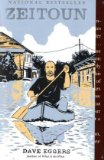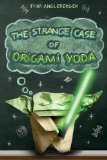 The Story of Stuff
The Story of Stuff
How Our Obsession with Stuff is Trashing the Planet, Our Communities, and Our Health
— And a Vision for Change
by Annie Leonard
Free Press, New York, 2010. 317 pages.
Starred Review
2010 Sonderbooks Stand-out: Other Nonfiction #6
When I checked out this book, my teenage son told me that he had seen the internet video it’s based on, and that was why he had stopped drinking bottled water, and had started drinking tap water from a glass. I was impressed that it would make that much difference.
And I hope it will make some differences in my life, too. This is an eye-opening book that tells the truth behind all our stuff.
Annie Leonard started by studying garbage — being an activist against toxic waste. But eventually, she learned that there’s a bigger system involved. In this book, she takes us through the entire life cycle of Stuff — Extraction, Production, Distribution, Consumption, and Disposal. She shows us problems — and solutions — every step of the way.
She talks about how she became a systems thinker:
“Everywhere I went, I kept asking ‘why?’ and digging deeper and deeper. Why were dumps so hazardous? Because of the toxics in the trash. And why were there toxics in the trashed products to begin with? Answering that question led me to learn about toxics, chemistry, and environmental health. Why were dumps so often situated in lower-income communities where people of color live and work? I started learning about environmental racism.
“And why does it make economic sense to move entire factories to other countries: how can they still sell the product for a couple dollars when it’s traveling so far? Suddenly I had to confront international trade agreements and the influence of corporations on governmental regulations.
“And another thing: why are electronics breaking so fast and why are they cheaper to replace than repair? So I learned about planned obsolescence, advertising, and other tools for promoting consumerism. On the surface, each of these topics seemed separate from the next, unconnected, and a long way from those piles of garbage on the streets of New York City or the forests of the Cascades. But it turns out they’re all connected.”
She makes many insightful points about our national goals:
“A big part of the problem we face today is that our dominant economic system values growth as a goal unto itself, above all else. That’s why we use the gross domestic product, or GDP, as the standard measure of success. It counts the value of goods and services made in a country each year. But it leaves out some really important facets of reality. For starters, GDP doesn’t account for the unequal and unfair distribution of wealth or look at how healthy, satisfied or fulfilled people are….
“Another huge problem with how the GDP is calculated is that the true ecological and social costs of the growth are not accounted for. Industries are usually permitted (both in the sense of being given permits by government as well as generally not being held accountable) to ‘externalize costs,’ which is a fancy phrase economists use to describe the fact that, while companies are busy producingb and selling widgets, they’re not paying for, or even tracking, the side-effects they cause, like contaminating groundwater, exposing communities to carcinogens, or polluting the air.
“This is totally messed up: while on the plus side, GDP counts activities that cause pollution and cancer (such as factories making pesticides or polyvinyl chloride) as well as activities to clean up that pollution and treat the cancer (such as environmental remediation and medical care), there is no deduction in the GDP for the pollution released into the air or water or the loss of a forest….
“For the powers that be — the heads of government and industry — the undisputed goal of our economy is a steady improvement in the GDP, aka growth. Growth as a goal has supplanted the real goals, the things growth was supposed to help us achieve. What I and many others have come to see — and as I hope this book makes abundantly clear — is that too often, as a strategy, focusing on growth for growth’s sake undermines the real goals. Too much of what gets counted toward ‘growth’ today — tons of toxic consumer goods, for example — undermines our net safety, health, and happiness.”
This is a fascinating, well-thought-out, eye-opening look at the systems that keep us taking, making, selling, using, and trashing Stuff. The author says at the end of the introduction:
“My goal with this book (and the film upon which it’s based) is to unpack the Story of Stuff — the flow of materials through the economy — as simply as possible. My aim is never to make you feel guilty (unless you are the head of Chevron, Dow Chemical, Disney, Fox News, Halliburton, McDonald’s, Shell, or the World Bank); it should be clear that the fundamental problem I identify here is not individual behavior and poor lifestyle choices, but the broken system — the deadly take-make-waste machine. I hope reading the Story helps inspire you to share information with people in your life about issues like toxics in cosmetics, the problems with incineration and recycling, and the flaws in the IMF’s economic policies….
“In the face of so many tough challenges, there are many exciting and hopeful developments that I celebrate in these pages and that I see as steps toward a truly sustainable ecological – economic system. Above all, I invite the citizen in you to become louder than the consumer inside you and launch a very rich, very loud dialogue within your community.”
You get the idea. I believe this is an important book, which can change your thinking and help you see the truth behind the stuff you buy. Think of this as a book to show you the truth and therefore help you make better choices.
Buy from Amazon.com
Find this review on Sonderbooks at: www.sonderbooks.com/Nonfiction/story_of_stuff.html
Disclosure: I am an Amazon Affiliate, and will earn a small percentage if you order a book on Amazon after clicking through from my site.
Source: This review is based on a library book from the Fairfax County Public Library.




